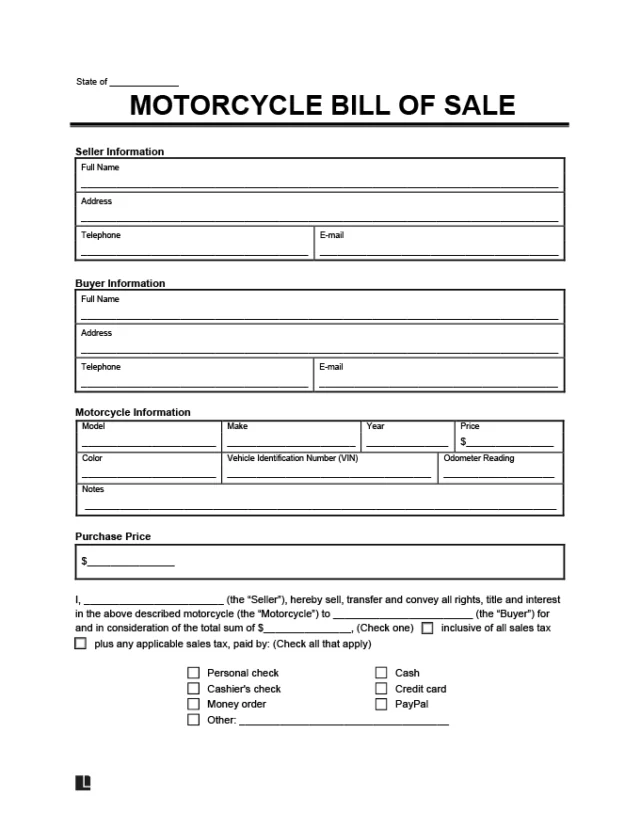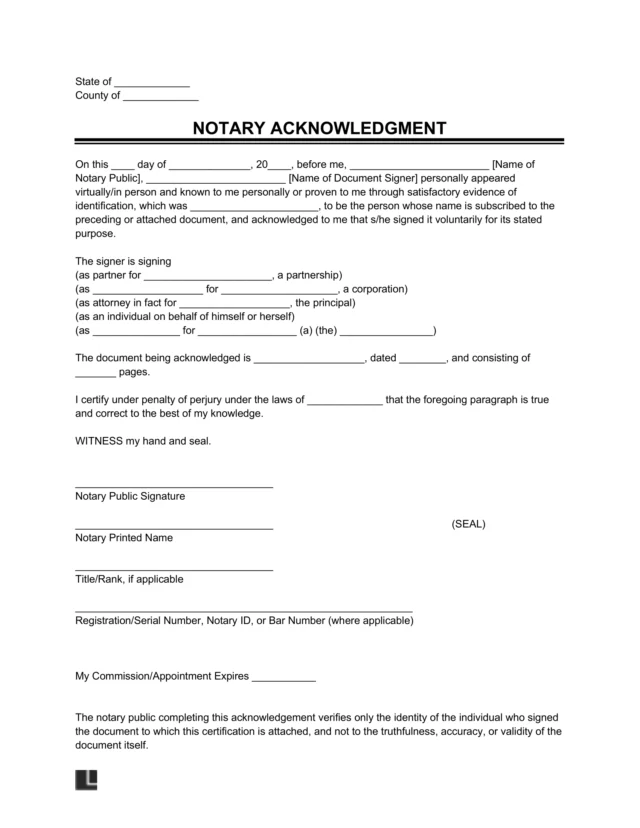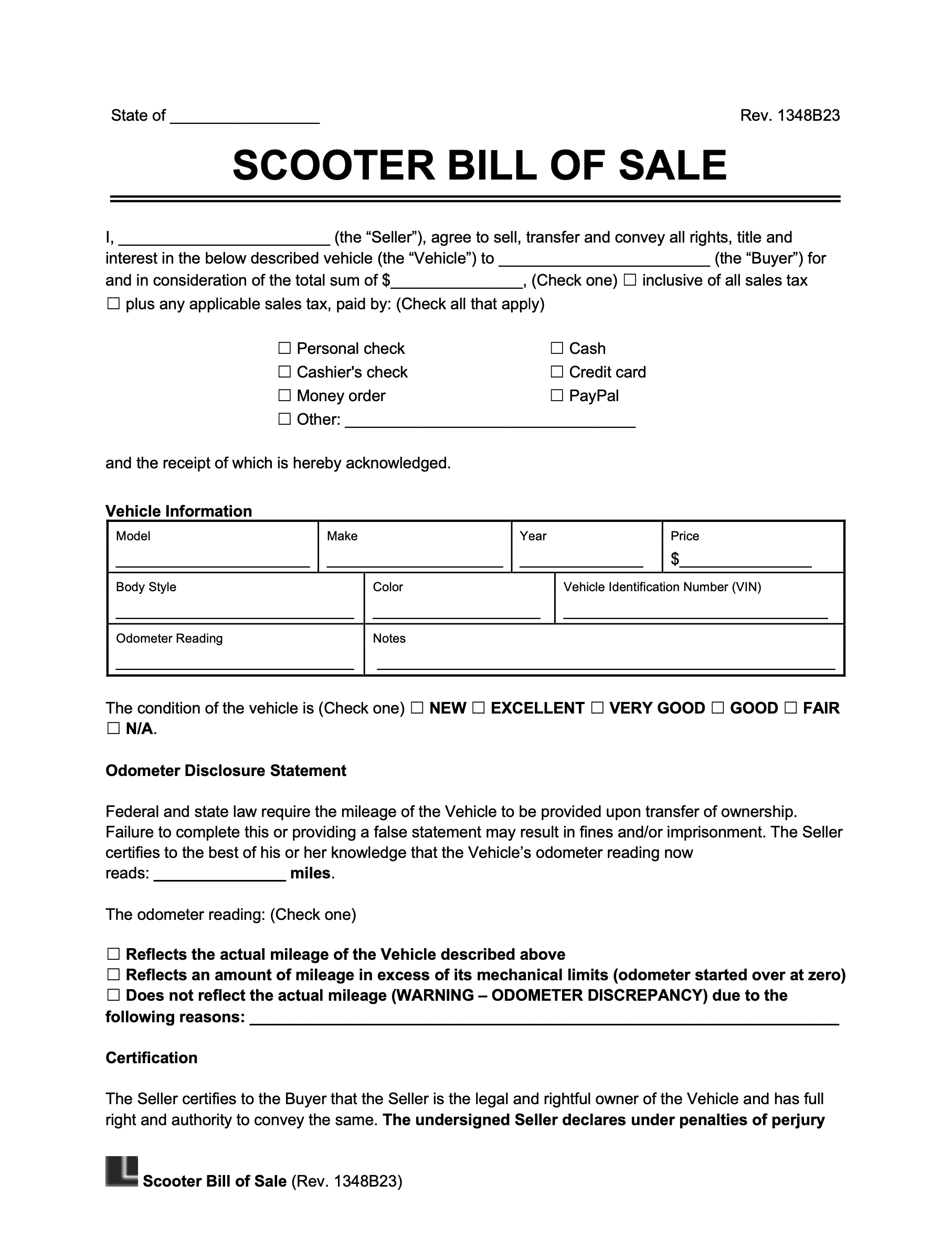What Is a Moped Bill of Sale?
A moped bill of sale is a legal document that proves a moped or scooter has been sold from one person to another. It protects both the buyer and seller by recording the transaction in writing. You can use the same bill of sale for both mopeds and scooters, since many states group them under the same laws for titling and registration.
The document typically includes:
- The buyer and seller’s full names and addresses
- A description of the vehicle (make, model, year, color, and VIN/ serial number)
- The date of sale and the purchase amount
- Details about the scooter’s condition, including whether it is being sold as-is
- Financing information and payment terms
If the buyer is paying in installments, you may also want to use a promissory note to outline the payment schedule and terms.
Moped vs. Scooter: What’s the Difference?
While the terms are often used interchangeably, mopeds and scooters are legally different in many states. Both are small, two-wheeled motor vehicles, but the engine size, maximum speed, and design differ slightly.
- Mopeds are typically smaller and have engines of 50cc or less, with a top speed of 30 mph. Due to their lower speed, they usually aren’t allowed on highways.
- Scooters have larger engines and can reach higher speeds. Some models may be allowed on highways, but they often require registration, a title, and sometimes a motorcycle license.
When Do You Need a Moped (Scooter) Bill of Sale?
You may need to use a moped or scooter bill of sale when you’re:
- Buying or selling the scooter in a private sale
- Registering or titling the scooter, especially if your state classifies it as a motor vehicle
- Providing ownership in states where scooters and mopeds don’t require formal titles
- Protecting yourself from legal or financial issues after the sale, such as accidents or unpaid tickets
In New York, for example, a bill of sale is required to register a scooter if a title is not available. The state classifies them as “limited-use motorcycles” and requires either a title or a bill of sale to complete the registration process. Even if your state doesn’t explicitly require a bill of sale for a moped or scooter, using one is a wise choice. It creates a clear record of the sale and helps avoid disputes.
Do I need to register a scooter or moped?
Depending on your state, you may need to title and register your moped or scooter with your local Department of Motor Vehicles (DMV). Always check your state’s rules, especially if the vehicle is gas-powered or exceeds 30 miles per hour.
Sample Moped (Scooter) Bill of Sale
View a sample moped bill of sale template below to learn how to complete each section with the correct details. Then, use our step-by-step questionnaire to complete the form and download your bill of sale for a moped or scooter as a PDF or Word file.







